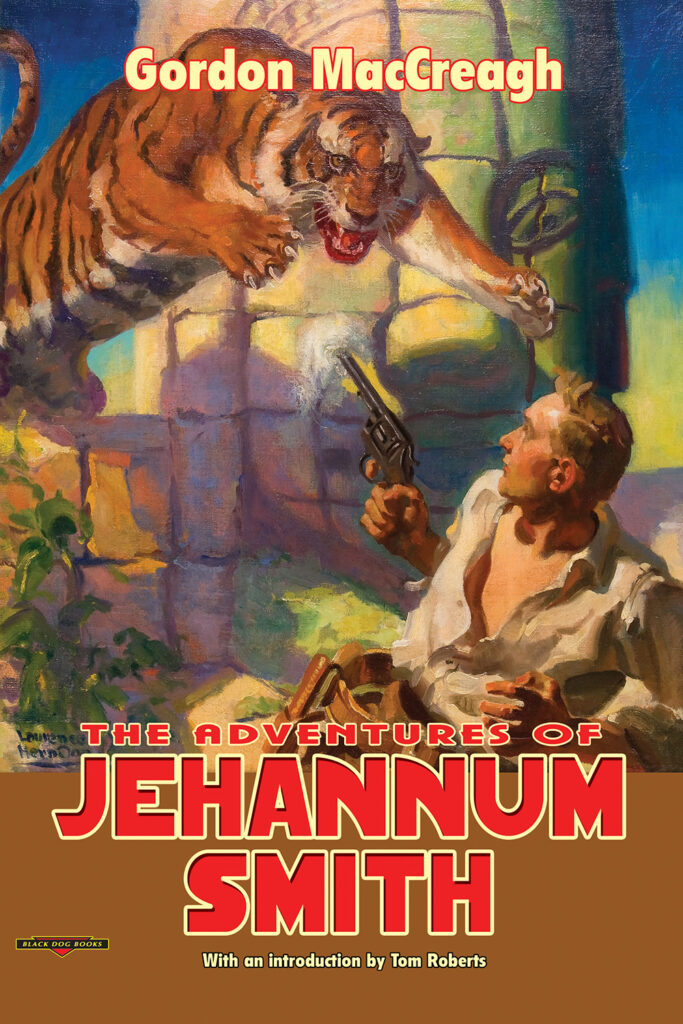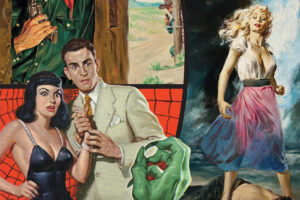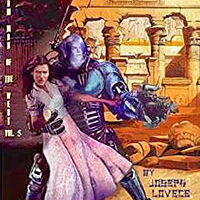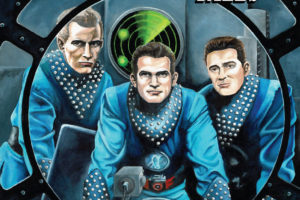Gordon MacCreagh (1889-1959) is a pulp author I hadn’t known much about, other than as the author of the Kingi Bwana series reprinted by Steeger Books. So, I picked up The Adventures of Jehannum Smith from Black Dog Books to check him out.
 This is a shorter series, five stories, all from Argosy, with the added bonus of a very nice, long introduction on the author, about 30 pages.
This is a shorter series, five stories, all from Argosy, with the added bonus of a very nice, long introduction on the author, about 30 pages.
Jehannum Smith is an adventurer/explorer in India whom the British call in to deal with local issues beyond their abilities, usually as he knows the natives better than they do.
In reading the intro, along with some other items such as the Pulp Flakes blog and a bio of him Indiana MacCreigh (2019) by Roderick Heather, it seems there are some questions about MacCreagh’s early life, similar with a few other pulp writers. There are questions about when he was born, as well as if he was born in the U.S. or Scotland. His father was in the U.S. to study Native Americans. MacCreagh later went to Scotland and then supposedly to Germany to get educated, but there aren’t any records of this, so may be doubtful.
Supposedly, due to a saber dual in Germany where he thought he had killed his opponent (he didn’t), he fled to Southeast Asia. This led to a series of jobs in Asia, India, Tibet, etc., including hunting and trapping animals for zoos before he came back to the U.S. Being exactly the kind of person with real-world adventuring experience that editor Arthur Sullivant Hoffman wanted, he started writing for Adventure for decades, as well as other pulps and then slick paper mags.
During WWI, he was involved as a pilot, but it’s not clear which service (Navy or Army Air Service).
In 1921, he was part of the Mulford Expedition to South America, which traveled into the Andes and then down into the Amazon with the goal of gathering new animal and plant samples. But it seems to have been disastrous, as few of the scientists were experienced in fieldwork, though it did bring back many samples. MacCreagh would write about it as White Waters and Black (1926), and there is a reprint edition from the University of Chicago Press. From what I read, it’s a semi-humorous account of the expedition and what happened to it and is a classic of Amazon exploration.
Later in 1927, he with his wife traveled to Ethiopia to, among other things, look for the Ark of the Covenant. Yes, the item that Indiana Jones was looking for! They were there for almost two years, writing articles for Adventure. This resulted in The Last of Free Africa (1928, 1935), and a long association with Ethiopia and its ruler, Haile Selassie, who made him a Knight of the Empire. He was considered an expert on Ethiopia in America. Sadly, this second book is not in print, though it was kept in print for several decades. I’m puzzled with all the POD publishers that no one has reprinted it.
His activities seem the stuff of fiction, and some think he may have been a real-life inspiration for Indiana Jones. I noted a recent bio of him titled Indiana MacCreigh (2019) by Roderick Heather. It addresses some of the questions about his life, but there are some still unanswered. He moved to St Petersburg, Fla., in 1940 where he and his wife lived until they passed away. As noted in the intro, I would also be interested in what happened to the various items they had at their home from their world travels.
Now, as to The Adventures of Jehannum Smith. As I noted, it reprints five works from Argosy, four being short stories, the last being a novelette, which was cover featured. We get a copy of the cover reprinted within the book. Not sure of the source of the cover artwork. These five were published in 1919 and ’20. The only standard characters are “Jehannum” Smith (or “Go to Hell” Smith as he’s called in a couple of stories) and his servant Poonoosawmi. In case it’s not clear, “Jehannum” is hell, a Muslim version of it. Also, some may be put off by how the natives are treated in these stories. The author was familiar with the area, so I’m not sure how much he may have exaggerated for effect in these stories.
First off is “Jehannum’ Smith” (April 4, 1919), which introduces us to our hero. We learn that Smith is over 6-feet tall and about 2-and-a-half-feet wide, and every so often gets restless and heads off in the jungle for a while. He is actually returning. These stories are set in India. In this one, a vaudeville manager wants Smith to find a Hindu temple girl who would be willing to dance in his shows. It doesn’t quite work the way he thought, though several were happy with the results. If you read the intro, you’ll see MacCreagh had some experience in this area.
Next is “Durga the Unapproachable” (May 17, 1919), which starts off by telling us a Hindu legend. I hope it’s accurate. It ties in with a festival going on for days. We get the stereotypical “ugly American” who wants to get a Hindu idol to take home as a “trinket” to display, while the others at the Hotel Oriental tell him that’s just not done. He tries to get Smith to get him one for $200. This leads to Smith wrestling a native fighter, getting into a lot of trouble, and succeeding. How? You’ll have to read this one.
A colonel in the British Secret Service approached Smith to work for him in “Worshippers of Boondi” (Nov. 8, 1919). Smith is one of seven men who can disguise themselves as a native and pull it off. The colonel needs him to look into what appears to be a reappearance of a Kali cult that is killing children. Smith says it’s something else and refuses. But then does so. It becomes more serious when the young son of the district superintendent of police, whom Smith met earlier in the story, is their next victim.
In “Tact and Some Diplomacy” (Dec. 13, 1919), an American company is trying to get a timber concession from a small interior rajah without much success, when they are recommended to engage Smith. The local British commissioner tries to get rid of Smith, in hopes of enticing him to get the concession for his associates. Smith decides to do so, but not in the way the commissioner expects. He heads off to the interior with Poonoosawmi, their only supplies are 4 bottles of whiskey and a package of ginger crackers.
This will require “tact and some diplomacy” to succeed. And Smith does this in his own way, which may not be the best way, but does, get results. He gets the concession. But for who? And along the way, also brings in the leader of an opium smuggling ring that was wanted by British authorities.
Finally, in the longest story, “Naked Men of Naga” (April 17 and 24, and May 1, 1920), we are in northeast India. The Naga are a real ethnic group that exists in that area. Smith is heading through the area, why we don’t know. Along the way, he finds a camp of greenhorns being stalked by Naga warriors. The camp has a scientist along with his daughter who assisted him, along with a young man. None understand or realize the danger they are in and aren’t willing to listen to Smith. He then heads out, where he knows he’ll find the man who is backing this expedition. Once he learns what has happened, and with his knowledge, knows the danger, he returns. And finds they are being led in a circle; they just don’t know it.
Can Smith get them out of the situation? And “take care” of the man who got them in this predicament? Well, this is Jehannum Smith after all. And an interesting aspect of this one is Smith must contend with a woman for the first time in this series. How does that affect it all?
So, there you have it. The adventures of Jehannum Smith. I may at some point get the Kingi Bwana series to read. which has been reprinted by Steeger Books. In reviewing his works, I see he wrote a lot more than just these two series. But the only other series I see is another five story one with Neil MacNeil that ran in People’s back in 1916. Wonder why no one has reprinted it? And are his other stories in Adventure, Short Stories, or elsewhere worth reading? I even found he had 2 stories in Strange Tales and one in Weird Tales. I’d like to check those out. The two in Strange Tales are of an occult detective. And his final story is a science-fiction work.
Since I wrote this, I have obtained a copy of White Waters and Black and hope to read it at some point. I’d like to get a copy of The Last of Free Africa, ideally a second edition, but I haven’t seen an inexpensive copy. I wish someone would reprint it.
[A version of this appeared in From the Den of a Pulp Super-Fan #3 that appeared in Pulp Era Amateur Press Society mailing #143]



Your comments